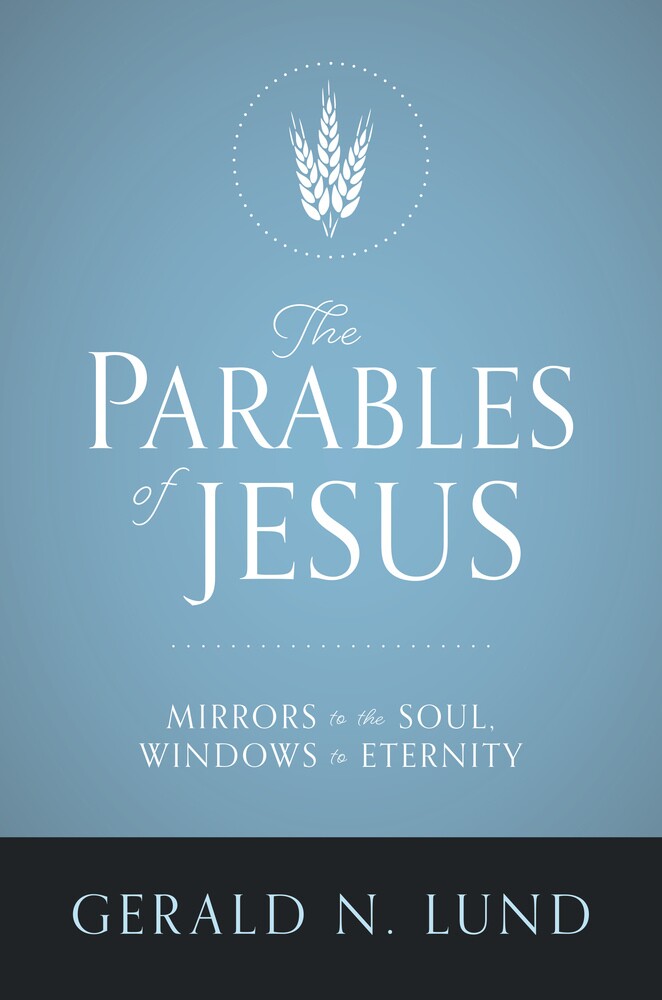
Parables show us how to better get on and then stay on the covenant path that leads to salvation and exaltation. That is our ultimate goal because only in that way can we receive a fullness of joy.
Fortunately, Jesus often taught about true discipleship. Again and again in His teachings, and especially in the parables, we find practical, down-to-earth counsel on how to change our hearts so they become more open to the promptings and guidance of the Spirit. Without the influence of the Spirit, there is no other way that we can find our way back to the presence of the Father. So these teachings become practical guides on how to incorporate gospel principles and actually apply them in our lives.
According to Matthew, this was the first parable Jesus taught. All three of the synoptic Gospel writers—Matthew, Mark, and Luke—include this parable in their Gospel. Matthew’s account of this parable has a few more details and a few significant differences from the accounts of Mark and Luke, so we shall use his for our study.
In all three accounts (Matthew 13:3–23; Mark 4:2–20; Luke 8:4–15), there is no specific event mentioned that brought forth this parable. Jesus was staying at Capernaum, a prosperous fishing village on the north shore of the Sea of Galilee. Matthew and Mark both record that He was at the seaside and a large throng of people had come to hear Him. The crowd was large enough that Jesus entered one of the fishing boats and moved a short distance away from the shore and began to teach them. Without any preamble, He began with this parable.
And he spake many things unto them in parables, saying, Behold, a sower went forth to sow;
And when he sowed, some seeds fell by the way side, and the fowls came and devoured them up:
Some fell upon stony places, where they had not much earth: and forthwith they sprung up, because they had no deepness of earth: And when the sun was up, they were scorched; and because they had no root, they withered away.
And some fell among thorns; and the thorns sprung up, and choked them:
But other fell into good ground, and brought forth fruit, some an hundredfold, some sixtyfold, some thirtyfold. Who hath ears to hear, let him hear. (Matthew 13:3–9)
This form of teaching evidently caught the disciples by surprise, for when an opportunity presented itself, they asked Him, “Why speakest thou unto them in parables?” (Matthew 13:10). That was most likely later in the day when they were alone with Him. And for that reason, the term disciples in this case suggests that this might have been only the Twelve. Jesus answered their question by explaining that people have different levels of spiritual readiness, and parables have a unique way of conveying different understanding to people with various levels of readiness. In some cases, their hearts are hardened against light and truth and they refuse to hear and understand. Jesus said this method allowed those who were spiritually ready to be taught, while those who were not ready would not be condemned by the knowledge (see Matthew 13:13–15).
Referencing a prophecy from Isaiah, Jesus said, “By hearing ye shall hear, and shall not understand; and seeing ye shall see, and shall not perceive: For this people’s heart is waxed gross, and their ears are dull of hearing, and their eyes they have closed” (Matthew 13:14–15). This suggests that an unwillingness to hear and understand may sometimes be a matter of choice, while in others it comes from a lack of understanding spiritual principles. In this instance, Jesus seemed to be saying that parables by their very design were meant to both reveal and conceal meaning, depending on the spiritual readiness of the listener. Jesus then said to them:
But blessed are your eyes, for they see: and your ears, for they hear. For verily I say unto you, That many prophets and righteous men have desired to see those things which ye see, and have not seen them; and to hear those things which ye hear, and have not heard them. Hear ye therefore the parable of the sower. (Matthew 13:16–18)
And with that encouragement, Jesus then gave them some keys for interpreting the parable.
When any one heareth the word of the kingdom, and understandeth it not, then cometh the wicked one, and catcheth away that which was sown in his heart. This is he which received seed by the way side.
But he that received the seed into stony places, the same is he that heareth the word, and anon2 with joy receiveth it; Yet hath he not root in himself, but dureth for a while: for when tribulation or persecution ariseth because of the word, by and by he is offended.
He also that received seed among the thorns is he that heareth the word; and the care of this world, and the deceitfulness of riches, choke the word, and he becometh unfruitful.
But he that received seed into the good ground is he that heareth the word, and understandeth it; which also beareth fruit, and bringeth forth, some an hundredfold, some sixty, some thirty. (Matthew 13:19–23)
…
Elder James E. Talmage, who served in the Quorum of the Twelve Apostles in the early 1900s and wrote a classic study of the life of Jesus that he named Jesus the Christ, made this observation about this particular parable:
Even … as judged by the recognized standards of rhetorical construction and logical arrangement of its parts, this parable holds first place among productions of its class. Though commonly known to us as the Parable of the Sower, the story could be expressively designated as the Parable of the Four Kinds of Soil. It is the ground upon which the seed is cast, to which the story most strongly directs our attention, and which so aptly is made to symbolize the softened or the hardened heart, the clean or the thorn-infested soil. (Jesus the Christ, 284–85; emphasis added)
Once again I stress that the key to understanding the parable is in understanding the nature of the four soils—or the difference in the hearts—upon which the seed falls. All three Gospel writers stress that likeness to men’s hearts (see Matthew 13:19; Mark 4:15; Luke 8:12).
We are not talking about the organ that keeps life going. We are speaking of the heart as it is used metaphorically throughout the scriptures to represent the inner person, the “real me” inside each of us. Because it is the heart that drives the blood through the body and keeps us alive and healthy by providing nutrients, protecting us from infections, and cleansing our bodies of impurities, the heart is a powerful symbol of our soul and nature. Note the many modifiers we use when we speak of the heart: broken hearts, happy hearts, cold hearts, warm hearts, hard hearts, soft hearts, hearts like stone, and some people who “have no heart at all.” …
Here is a question that comes to mind as we apply this parable to real life. Why does the Lord only mention requiring the heart here? Why doesn’t He also ask us for the head? Or the hands? Or the feet? There are places where He asks that we totally give all of ourselves to the work, but again and again, as seen in the sheer number of times the heart is mentioned, the scriptures teach us that the heart is the core of our being, the center of our spirituality. Or lack of it. Thus the heart represents the “inner me, the true me.” With that in mind, is it any wonder that the very first of Christ’s parables would focus on the nature of our hearts? …
Our hearts are like a gate that swings open or shut, but only on our command. To put it another way, we are the gatekeepers of our own hearts! We are the ones who choose what we let in or keep out.
Elder David A. Bednar described this unique privilege that God has given to us: “A learner exercising agency by acting … opens his or her heart to the Holy Ghost and invites His teaching, testifying power, and confirming witness. … Ultimately, however, the content of a message and the witness of the Holy Ghost penetrates into the heart only if a receiver allows them to enter” (David A. Bednar, Ensign, Sept. 2007; emphasis added).
As we conclude our examination of this powerful parable that describes the various hearts that we create for ourselves, let us remember this simple—but profound!—summary from the Savior Himself:
“I, the Lord, require the hearts of the children of men” (D&C 64:22).


